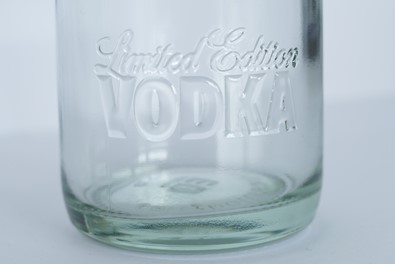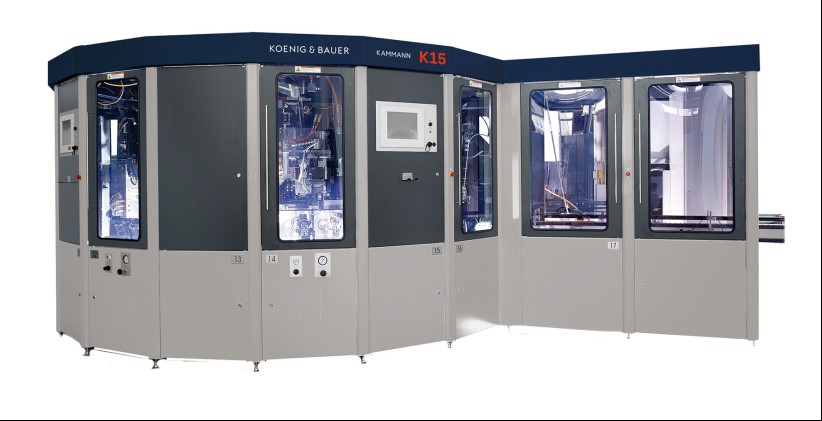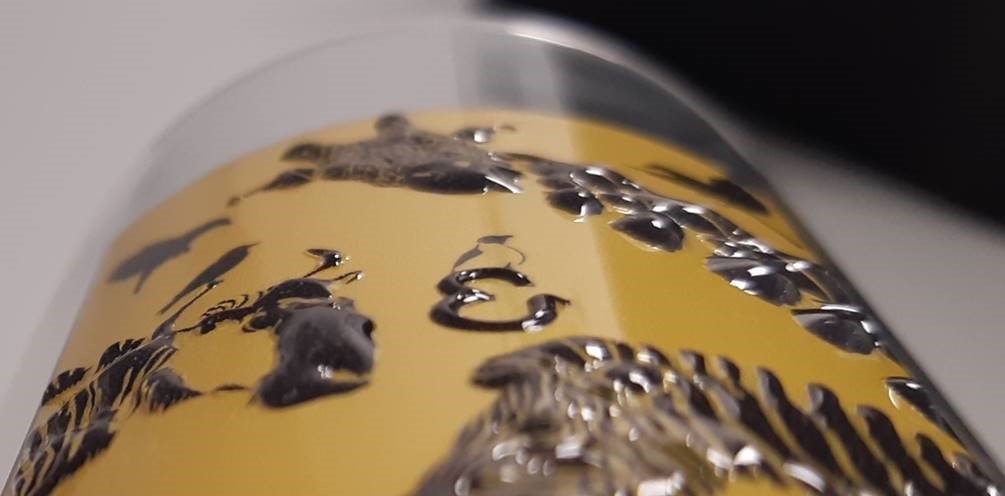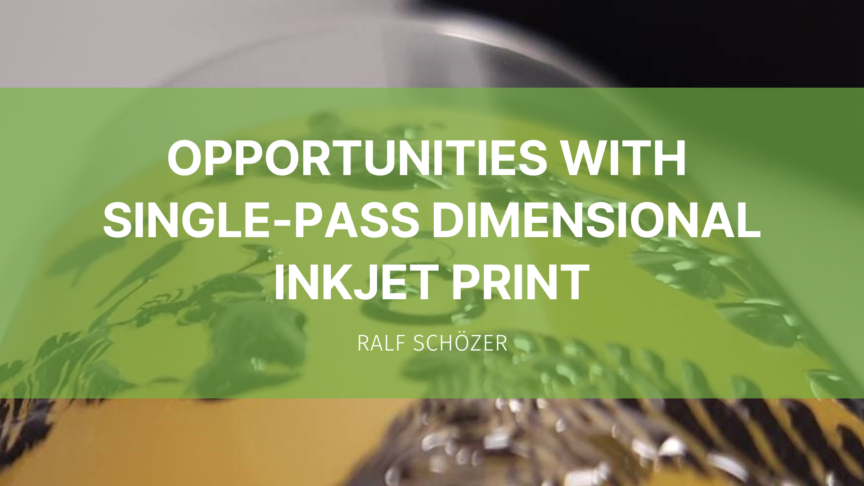Not all print is flat. As print is in competition with electronic media the tactile properties of a printed product are becoming ever more important. This does not only comprise the substrate but the print itself. Several companies offer tactile embellishment systems already and the market interest has been quite high. There is one drawback, however: as multi-pass systems, they require some time to build up sufficient thickness.
A cooperation between Koenig & Bauer Kammann , Marabu and Xaar is very interesting in that respect. This development brings together the necessary expertise from different areas to develop a solution in dimensional glass decoration. Kammann , a subsidy of Koenig & Bauer since 2013, is a leading manufacturer of direct-to-shape printers. Marabu is an ink producer, while Xaar manufactures the inkjet heads.
Decorating containers
Koenig & Bauer Kammann is located in Northern Germany and has about 180 employees. The focus is on manufacturing machinery for printing on containers or hollow articles made of glass, plastic and metal. Traditionally the containers are screen printed. For several years now UV inkjet is being offered for short run decoration as well – as a stand-alone process or in combination with screen printing or hot foiling. About 30 inkjet or hybrid lines have been installed already, driven by the trend to shorter runs and just-in-time production.
One area that remained unaddressable for shorter runs was textured containers, especially on glass. Traditionally, producing textured glass containers requires a custom moulding form, making volumes below 100k containers not economically feasible and requiring long lead times. Also, the logistics for storing, preparing and re-using of textured containers are more complicated.
Single-pass dimensional inkjet technology
Inkjet technology however can create textures without a permanent form and Koenig & Bauer Kammann aimed for a solution that can be added to their existing printing lines. It combines a new “high built varnish” clear UV-curable ink contributed by Marabu and a purpose-built print assembly for the container decoration.
Testing several options Koenig & Bauer Kammann decided on the Xaar GS 12 head, giving the optimal flow rate, resolution and form factor. An array of nine inkjet heads can be fitted into one printing station of the Koenig & Bauer Kammann K-Series print lines. The resolution of the heads is 360 x 720 dpi, which gives sufficient detail for all embellishment purposes and produces even better contours and detail than conventional processes. The process speed is 12 metres/minute, which allows for industrial-scale production.

Container with digital embellishment
The technology can lay down 1/3 of a millimetre per layer. Accordingly, a three mm (1/8 inch) thickness can be achieved in one pass with the nine heads. Most applications, like creating a 3D texture or highlighting text, require two to six layers. If needed, multiple dimensional print stations or multiple passes could extend the thickness even beyond the three millimetre limit. A full colour image can be printed before the dimensional layer.
The process can be integrated into existing machines either by using an empty, spare station or adding an extra print station. Alternatively, a CMYK unit can be upgraded by adding five more dimensional heads (for the maximum of nine). This would not allow for the full height of three millimetres in one pass, however.

Koenig & Bauer Kammann K15 container print system
The process has been optimised for glass containers, however, plastic containers could be used as well as long as they are sufficiently rigid. Also, the surface properties of the plastic need to be considered, while printing on pre-treated glass always works. According to Koenig & Bauer Kammann the results for dishwasher resistance, and resistance to chemicals and abrasion are excellent.

Dimensional print with colour underprint
As a purely digital process one-off and short runs are possible, even variable designs. Given the high initial costs of a glass mould, the process is viable for medium runs as well. The technology has been officially launched in August 2021 and since 2022 first production sites started to use the technology.
Beyond containers
There are interesting ramifications for this technology beyond container decorating, however. The process does not only work on containers, also flat sheets can be overprinted. The multi-pass approach of the existing embellishment system makes in-line integration into a printer difficult. With a single-pass system, it would be a lot easier to couple both technologies in one process flow. The high ink transfer would even produce a nice result with a single, or probably a few, rows of embellishment heads. A sample on a light board showed a nice glossy, tactile effect.
For Koenig & Bauer, as the parent company of Koenig & Bauer Kammann , an application in the VariJET 106 inkjet folding carton press could make sense. Spot varnishing is a staple requirement in folding carton production. The press relies so far on a conventional varnishing unit, with the downside of having to change a flexo plate when changing the varnishing image. An inkjet varnishing unit could make the change-over fully digital, saving time, plates and waste.
Beyond folding cartons, other markets could benefit from in-line spot varnishing as well. Selected toner devices allow for spot varnishing with a clear toner station, however, the effect is by far not as glossy and prominent as with this technology. Process colour inkjet presses in general lack any spot varnishing. Granted, not all print does require embellishments such as spot gloss varnishing or dimensional print. However, those are the prints with the most value add and hence the most attractive ones to produce.

